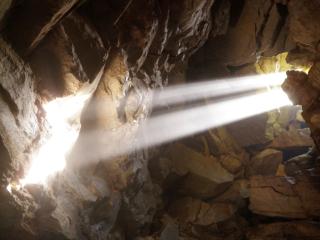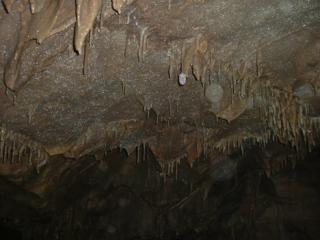Hoosier’s underground features bring discoveries in unique ecosystems
INDIANA — Many areas of USDA Forest Service lands here in the Eastern Region are geographically significant, but the karst region on the Hoosier National Forest stands out for being home to numerous species only found here.
Karst refers to an area with limestone, which is a soft rock that is easily dissolved in water. In the karst region on the Hoosier National Forest, the Lost River has been flowing and slowly eroding this limestone for thousands of years, building a network of over 240 caves in the process.
Currently, the Hoosier has over 50 caves that have an elevated protection level and are deemed “significant” based on their hydrological, biological, geological or heritage values.
One area designated as a National Natural Landmark in 1972 is the Wesley Chapel Gulf Area, named after the nearby Wesley Chapel Church.

“For us, it’s one of the most diverse areas of the forest,” said Steve Harriss, forest wildlife biologist for the Hoosier National Forest. “When you think of a forest, you think of woods, but for us having this as part of the forest is unique.”
Harriss has been exploring the caves for about the last 15 years and relies heavily on partners like the Indiana Karst Conservancy for insight on how to steward the unique ecosystems found in the caves and sinkholes in the Wesley Chapel Gulf Area.
“A species is endemic when it’s only found in a specific geographic area, usually isolated from other habitat,” said John Curnutt, regional wildlife ecologist for the Eastern Region. “Karst systems are not only isolated from the surface terrain; individual pools in caves become isolated from each other as well. This isolation leads to speciation, as each life form adapts to its local conditions. Around 30 species on the Hoosier are cave-dwellers not found anywhere else on the planet.”
Endemic species are prime candidates to be Regional Forester Sensitive Species, a designation that offers protection to the habitats supporting these species. For the Eastern Region, comprised of roughly 12 million acres, there are 975 species on this species list, with 135 found on the Hoosier National Forest.
“They are several feet underground, they are protected, but they are vulnerable,” continued Harriss. “We want what is best for the Wesley Chapel Gulf area, that’s why continue to work with our partners to know what we have and keep it safe.”
For more information about the Wesley Chapel Gulf area, please visit The Indiana Karst Conservancy or the Hoosier National Forest Hoosier webpages.

